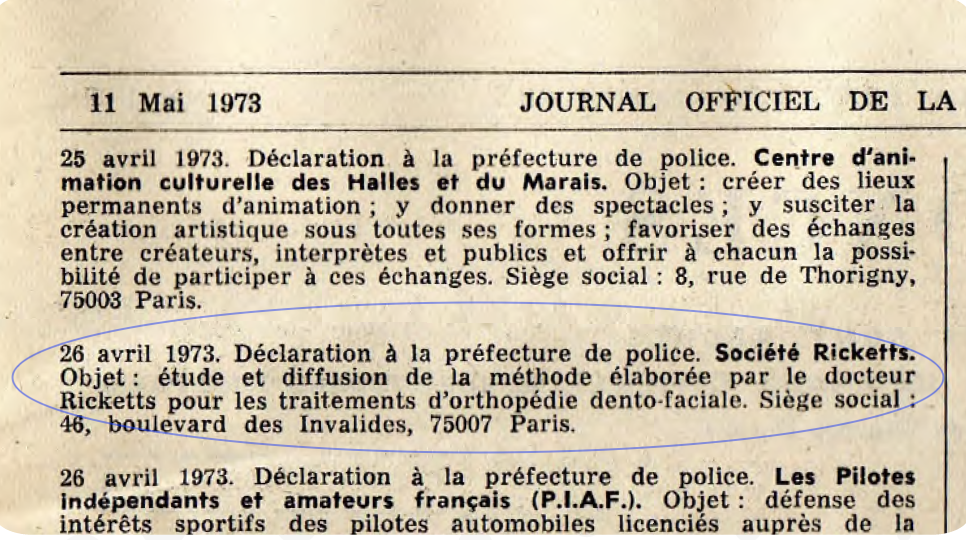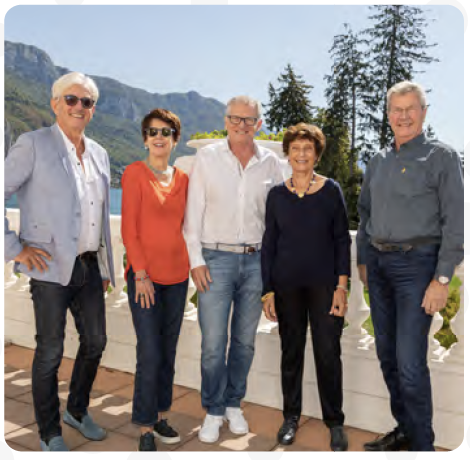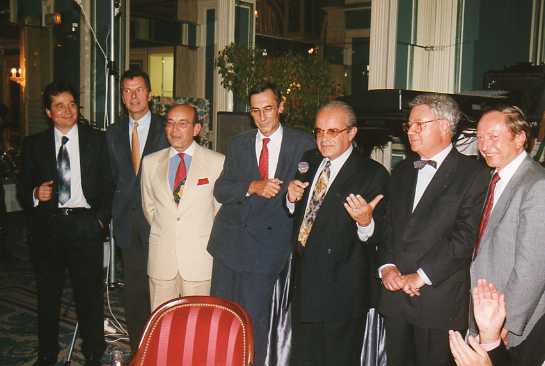Bioprogressive Ricketts
Guy Perrier d'Arc came up with the idea of bringing together colleagues who had taken courses on Ricketts' "bioprogressive method". Following a meeting held on November 19, 1972, during the S.F.O.D.F.'s "petite session" at the Faculté de Montrouge, a provisional board was set up.
The founders were not mistaken, as we can see today that very good results have been achieved.
The articles of association, drawn up with the help of Jacques Barbary, were published in the Journal Officiel on May 11, 1973, and the "Société Ricketts" was born.
Official bulletin of May 11, 1973: creation of Société Bioprogressive Ricketts
That same May, thanks to the kindness of Martin P. Hamilton, Managing Director of Rocky Mountain Products C° France, the first BULLETIN appeared, initially a simple liaison between the various regions.
This "bulletin" of a few sheets, grew over the years to become "L'orthodontie Bioprogressive".
The first participants are taught a genuine "Orthodontic Philosophy", according to the title of the manual provided. The aim is to propose a method for managing diagnostic and therapeutic reasoning: mechanics with the integration of functions and growth, visualization of treatment objectives, without sidestepping the organization of chairside practice.
A "global method" of learning orthodontics that must answer the 3 famous questions:
What ?
Why ?
How ?
Orthodontic France in the 1960s saw the consecration of Tweed's concepts, imported by R. X. O'Meyer, which ushered in the era of modern orthodontics, despite questionable diagnostic values and mechanical means.
The edgewise supplanted removable devices, but dissent was already emerging with the emergence of the concept of "light forces" and the birth of the Begg technique. The novelty of Ricketts' thinking was a bombshell in this mechanistic landscape. It remains revolutionary to this day.
Let's recall what President J. Philippe reported in the first editorial of our "Bulletin". He wrote
Introducing the Society
The Ricketts Society is founded.
It was born out of a meeting of some fifty orthodontists who, having understood what the best orthodontic method is today, wanted to learn more about it, follow its development and spread the word.
If every one of these practitioners enjoys the pride and pleasure of working with the latest technique, and if their patients can benefit from its advantages, it's thanks to the dynamism and enthusiasm of one man, Carl F. Gugino.
In 1966, a young American practitioner, whose practice was expanding rapidly, agreed to spend several weeks in France.
He was unknown there, had no academic credentials, his words were greeted with suspicion and he was barely compensated for his expenses. But he convinces. And he returns, driven by an unstoppable desire to share his faith in the method of his master, Dr. Ricketts, and by his passion for orthodontics. Behind the practitioner's brushstrokes lies the evangelist's ardour. We owe him a debt of gratitude.
At the next A.D.F. International Congress, Carl Gugino will be in the limelight: the least French practitioners owed him.
We could apply Goethe's phrase to the orthodontist: "to know and do one thing well proves a higher development than to do half a hundred".
To help us know and do what's right, the Ricketts Society was born, bringing together those whom C. Gugino trained, directly or indirectly.
Courses are always too short, and many of us feel the need to consolidate our knowledge, the desire to confront our diagnoses or treatment plans in a small group where everyone participates actively in the discussion. This is the kind of exchange of views that the S.F.O.D.F. no longer allows, given its sheer size, and that's why we've adopted the formula of regional groups.
As for matters of common interest (relations with the Foundation for Orthodontic Research etc.), we had to choose between frequent national meetings or information at home. We opted for the newsletter, a friendly, convenient and hopefully effective link.
The Company is launched. Let's wish it well, but let's not forget that it can only move forward with the breath of each and every one of us.
J. Philippe.

Since then, the passion has never wavered.
Initially, courses were organized four times a year, always led by Carl Gugino, accompanied by Michel Delamaire, an interpreter of both the language and the thinking of this practitioner.
La Baule 1998: from left to right: Daniel Rollet, Claude Chabre, Alain Béry, Michel Delamaire, Carl F. Gugino, Julien Philippe, Guy Perrier d'Arc.
Three times a year, the heads of the "Regions" bring their members together for one or more days of continuing education, where specialists and academics address all subjects concerning the relationship between ODF and other dental disciplines.
The "National Days" of our Society are held for two or more days, every two years, in each of the Regions that make it up, or sometimes in the overseas territories, Guadeloupe, Martinique, or, abroad, Mauritius, for example, in 1988.
Since then, other countries have welcomed our Society. Looking back, we can see how far we've come. The different regions, each structured in their own way, have pursued the same goals: to make the bioprogressive method known and to promote it.
We can confirm that they have succeeded. For, contrary to the chagrins who would have us believe that it is an easy and incomplete technique, for those who practice it as they have been taught, it has the same basic requirements as the others, and in fact demands much more.
Because Dr. Ricketts and Dr. Gugino have always insisted, for lasting results, on the quality of the end of treatment, naturally insisting on the best meshing of the cusps of the teeth in the lateral sectors, but also on the re-education of the various functions, to respond to the logic and coherence of the "bioprogressive concept".
Let's not forget that this method is one of the few fixed techniques that can be applied in mixed dentition, which we feel is not insignificant.
And perhaps most important of all, the bioprogressive concept is capable of integrating new therapeutic advances and keeping pace with the evolution of orthodontics, because it lacks the rigidities that create ankylosis.
And if there were fifty of us when it was christened, there are almost seven hundred of us today.
What better praise could there be for the Presidents J. Philippe, G. Perrier d'Arc, M. Bonnerot, M. Delamaire, A. Béry, Cl. Chabre, D. Rollet, F. Bazin and E. Lejoyeux, who inspired our ideas, the members of the Board of Directors who put them into practice, not forgetting the "actives", and our departed friends, all contributed over the years to making the Bioprogressive Ricketts Society the second-largest orthodontic society in France.
L. Chavand and B. Terk
former "Bulletin" editors

